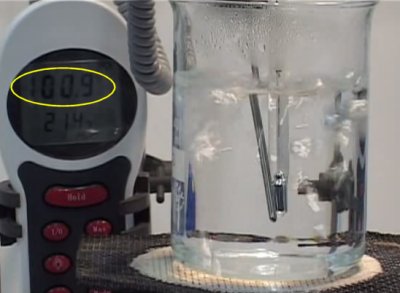 I did a double take when I saw the most recent offer to land in my inbox: “a $20 Brazilian Blow Dry”. I quickly realised it was a hair treatment wholly unrelated to waxing or any kind of sexual activity, but my being less than cranially hirsute, I’ve not taken much interest in such matters as straightening. Apparently, this trendy Brazilian hair straightening treatment tames curls and frizz in just a couple of hours, lasts months, and is very popular with various celebs and increasingly a public hoping to emulate their idols.
I did a double take when I saw the most recent offer to land in my inbox: “a $20 Brazilian Blow Dry”. I quickly realised it was a hair treatment wholly unrelated to waxing or any kind of sexual activity, but my being less than cranially hirsute, I’ve not taken much interest in such matters as straightening. Apparently, this trendy Brazilian hair straightening treatment tames curls and frizz in just a couple of hours, lasts months, and is very popular with various celebs and increasingly a public hoping to emulate their idols.
However, in August, the US Food and Drug Administration (FDA) apparently sent a first warning letter to the manufacturer of a trendy hair-straightening product. The letter concerned the alleged presence of the toxic carcinogen formaldehyde at levels well above those considered safe in a consumer product and the alleged inappropriate claims by the company that their product is free of formaldehyde. Salon owners and clients allegedly exposed to the product claim to have suffered, headaches, eye irritation, nausea, dermatitis, allergic reactions, chest pain, asthma, insomnia and depression.
Chemical safety and testing of thousands of consumer products is rightly high on the agenda in many regulatory areas. Initiatives in the EU, US and elsewhere attempt to rationalize testing and approval of thousands of chemicals to improve consumer understanding of domestic and other products and to reduce the risks associated with exposure to a wide range of toxic and corrosive substances. It is frustrating therefore to learn of abuses in which products are wittingly formulated with excessive quantities of chemicals with known risks. This does nothing for the public perception of chemistry and provides the tabloids with yet more fodder with which to color their scaremongering headlines of this ilk: “Could your blow-dry poison you?”, “The hair treatment of death” and “The Brazilian that could cause cancer”. All deeply unscientific statements as expected of this section of the media.
So, what is Brazilian hair straightening and why has it become a problem. The treatment is designed to “tame curls and frizz” in just a couple of hours. Apparently, it lasts for several months, unlike non-chemical hair straightening and has become increasingly popular with image-conscious celebrities and those members of the public who seek to emulate their looks or develop their own straightened style.
Unnamed chemicals in the lotions are used make the hair receptive to added keratin, the hair protein. Adding keratin and then using conventional hot iron hair straighteners allows the stylist to remove natural curls or frizz from hair and produce the much-sought after effect. The bound keratin keeps the hair in its newly straightened state for several weeks. But what of those unnamed chemicals? Consumer pressure in 2010 and into 2011 led to investigations by Oregon Occupational Safety Health Administration (OHSA), Health Canada others revealed that one of the ingredients is formaldehyde. Formaldehyde is a colorless and pungent gas widely used in the manufacture of polymers and other products with annual production of more than 23 million tonnes. Its aqueous solution, known as formalin, has been used as disinfectant, for preserving biological specimens and as embalming fluid. It is a known human carcinogen, according to the US National Toxicology Program official announcement in June 2011. It has also been implicated in sick-building syndrome because of its widespread presence in construction products such as wood, fillers and synthetic board.
International regulations suggest that 0.2% formaldehyde solution is the upper limit on safety for consumer products. Health Canada’s analysis of a wide range of hair products revealed formaldehyde levels up to 10%, 50 times above the 0.2% threshold. Meanwhile, Oregon OHSA analyzed air samples from hair salons using the products and found those to be well above regulatory safe limits.
This latter point is supported by University of Liverpool chemistry researcher Robert Slinn. Formaldehyde, CH2O, is a toxic and irritating gas that is very soluble in water, he says. Commercially, formalin is a saturated 40% v/v aq. solution (about 37% w/w). He points out that 1 ml of such commercial formalin contains approximately 400 milligrams of formaldehyde. A preparation containing 10% formalin solution, the worst determined by Health Canada, would thus contain about 40 mg of formaldehyde. 1 ppm in the air is the threshold for causing eye irritation in most people (anything below that and very few people would be irritated). The use of several containers of product in the enclosed space of a hair salon each week could readily lead to concentrations of formaldehyde in the air well above permitted levels, Slinn says.
The manufacturers insist that their products are safe and that they contain no harsh chemicals and are labeled as formaldehyde-free. The FDA’s tests allege that methylene glycol, the liquid form of formaldehyde, is present at levels ranging from 8.7 to 10.4%. The agency’s first warning letter asserts that companies cannot label their products as formaldehyde-free if they’re not, obviously that would be misleading.
Were the tabloid scare stories correct for once? Yes and no. They were correct insofar as products labeled “formaldehyde free” have allegedly been sold with incorrect labeling and some of those products were shown by analysis to contain formaldehyde in solution at levels higher than regulations for consumer products allow. As with any toxicity, dose and exposure routes are critical. There are presumably thousands of people using the various hair-straightening products, a class action legal case is underway, but the headline claims of Brazilian killers are probably overblown.
 I did a double take when I saw the most recent offer to land in my inbox: “a $20 Brazilian Blow Dry”. I quickly realised it was a hair treatment wholly unrelated to waxing or any kind of sexual activity, but my being less than cranially hirsute, I’ve not taken much interest in such matters as straightening. Apparently, this trendy
I did a double take when I saw the most recent offer to land in my inbox: “a $20 Brazilian Blow Dry”. I quickly realised it was a hair treatment wholly unrelated to waxing or any kind of sexual activity, but my being less than cranially hirsute, I’ve not taken much interest in such matters as straightening. Apparently, this trendy 
